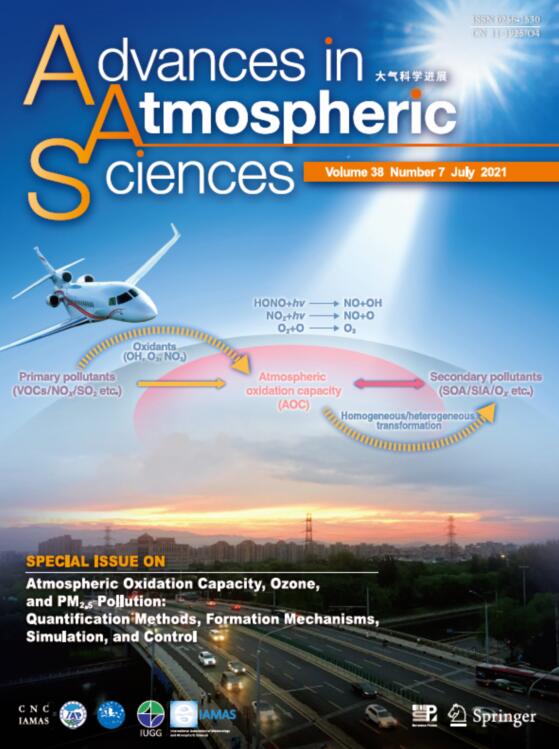-
The atmospheric oxidation capacity (AOC) is the essential driving force of atmospheric chemistry in forming complex air pollution, which determines the removal rate of trace gases and the production rates of secondary pollutants. The processes and rates of species being oxidized in the atmosphere thus constitute the key factors to quantify the AOC. Currently, the term “oxidation capacity” is defined as the sum of the respective oxidation rates of the molecules (VOCs, CO, CH4, etc.) by the main oxidizing agents (OH, O3, NO3, etc.), and these oxidation processes are described in atmospheric chemical reaction mechanisms such as the RACM (Regional Atmospheric Chemistry Mechanism) and the MCM (Master Chemical Mechanism). However, these mechanisms cannot explain the rapid secondary aerosol production observed in polluted environments such as winter haze in China, suggesting the existence of missing AOC mechanisms participating in the formation of secondary aerosols. Thus, a deeper understanding of AOC remains a challenging endeavor and is the priority before any efficient pollution mitigation can take place.
This special issue, consisting of three parts, mainly focuses on the quantification and simulation of AOC processes. Topics include: field observation of key oxidizing species and their precursors in urban and suburban environments (See Bai et al., 2021; Du et al., 2021; Kang et al., 2021; Liu et al., 2021; Qian et al., 2021; Wang et al., 2021a; Wu et al., 2021; Zhu et al., 2021); laboratory dynamics studies on the ozone formation potential of acetaldehyde, the photooxidation mechanism of methacrolein, anthropogenic effects on biogenic secondary organic aerosol formation to include the contribution of the free radical sources (Xu et al., 2021; Zhang et al., 2021; Wang et al., 2021b); and numerical modeling studies to quantify the ROx budget and O3 photochemical production in urban environments (Bei et al., 2021; Xue et al., 2021; Cui et al., 2021; An et al., 2021).
The papers in this special issue of Advances in Atmospheric Sciences provide valuable datasets from the spatial and temporal distributions and sources of oxidizing species and their precursors, as well as useful information about the laboratory dynamics and model simulations on AOC processes. Nonetheless, more in-depth analyses and attributions are still needed for AOC quantification and simulations to further understand the secondary formation processes and improve the atmospheric chemistry mechanisms.
Acknowledgements. It would have been impossible to produce this special issue without the contributions of the guest editors and the AAS editorial team. This special issue is in part supported by the National Key R&D Program of China (Grant No. 2017YFC0210000).
Preface to the Special Issue on Atmospheric Oxidation Capacity, Ozone, and PM2.5 Pollution: Quantification Methods, Formation Mechanisms, Simulation, and Control
Abstract:















 AAS Website
AAS Website 
 AAS WeChat
AAS WeChat 
 DownLoad:
DownLoad: